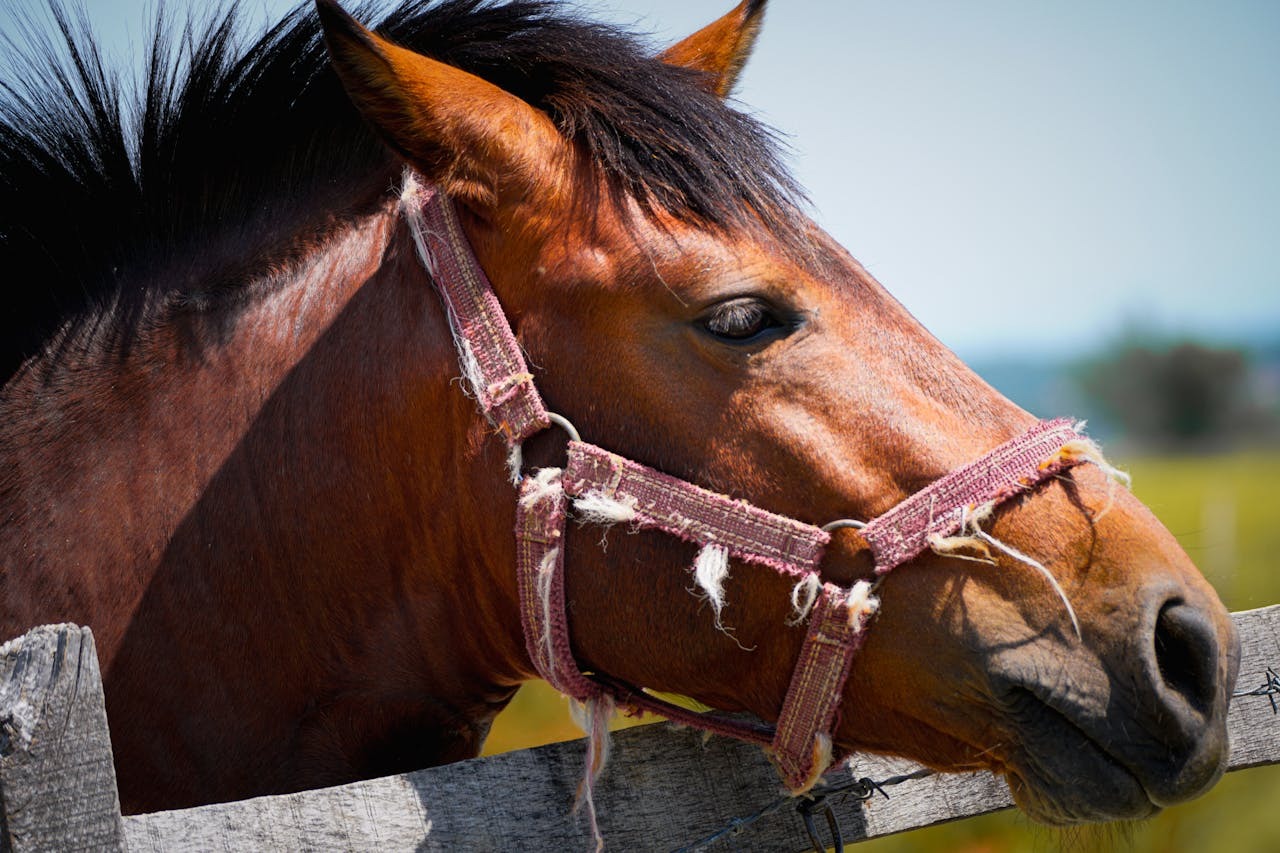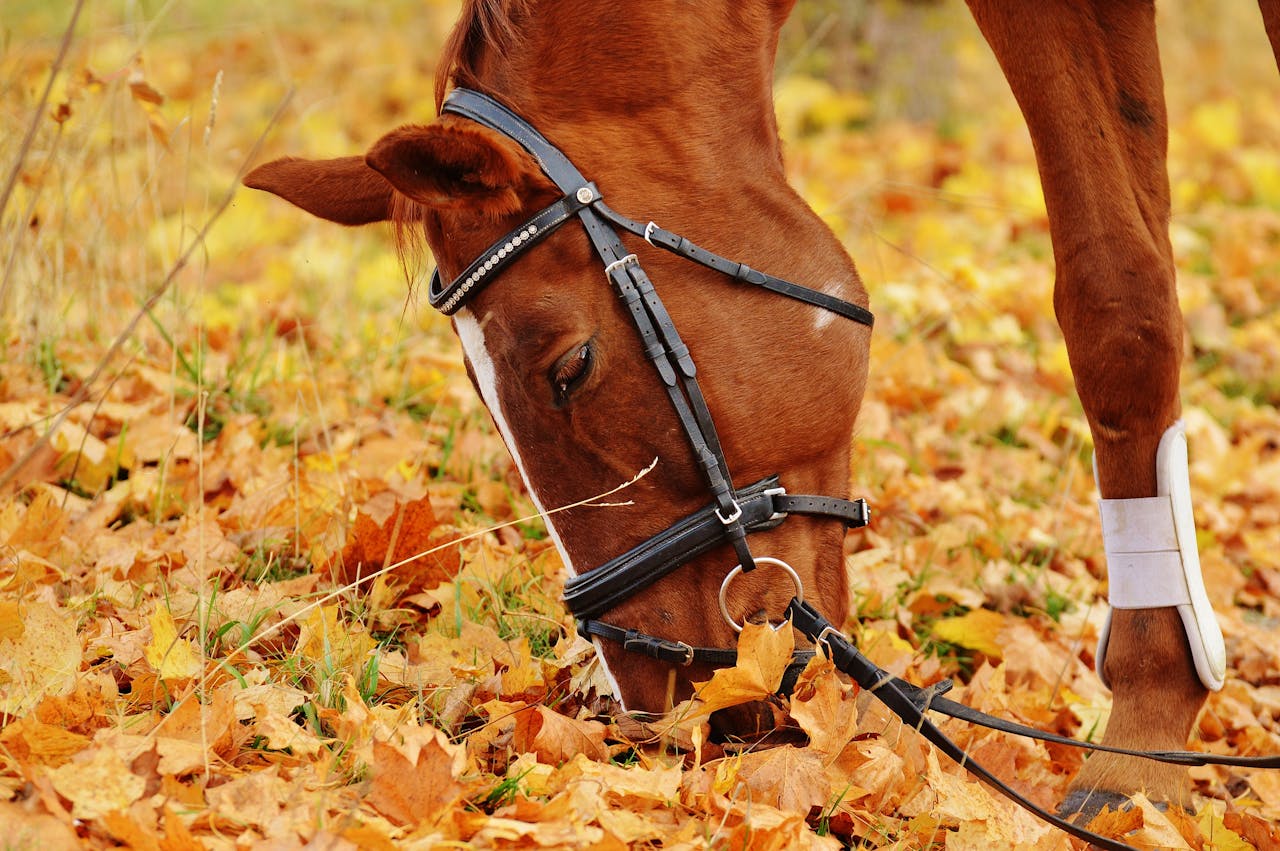TL;DR
- Laminitis in horses is a painful inflammation of the hoof that can make walking difficult.
- It is commonly caused by overgrazing, sudden diet changes, metabolic or hormonal disorders, hard work on tough ground, poor hoof care, and severe illness or infection.
- Common symptoms include shifted stance, reluctance to move, strong pastern pulse, warm hooves, restlessness, excessive lying down, and hoof deformity.
- Risk factors are obesity, high-sugar diets, hormonal disorders, previous laminitis, inactivity, stress, and susceptible breeds.
- Diagnosis involves observing movement, checking digital pulses, X-rays, and blood tests.
- Treatment and management include anti-inflammatories, supportive shoes or pads, guided exercise, low-carb diets, managing insulin/PPID, and new drugs like methylated tirilazad (PTP-102).
What Is Laminitis?
Laminitis in horses is a painful condition that affects the sensitive tissues inside the hoof. These tissues connect the hoof wall to the underlying bone and support the horse’s full weight. When they become inflamed, this bond weakens, causing the bone to tilt or even drop in severe cases. As a result, walking becomes painful and movement is difficult. If not treated promptly, laminitis can cause permanent damage to the hoof.
In the sections ahead, we’ll take a closer look at what causes laminitis, the signs to watch for, the factors that put a horse at risk, and the ways it can be diagnosed and treated.
What are Some Common Causes of Laminitis?
Laminitis sometimes manifests as a result of an external factor, like a change in routine or environment. Other times, it’s the result of internal changes within the horse’s body. Here are the most common causes:
1. Too Much Rich Grass
Spring and fall grasses are rich in sugar. Horses allowed to graze for extended periods may suffer if their systems can’t process the sugar overload.
2. Grain Binge or Sudden Diet Shifts
Sudden changes in feed type or quantity can disrupt gut function. Once digestion goes off track, inflammation builds fast. This can lead to laminitis.
3. Equine Metabolic Syndrome (EMS)
Horses with EMS usually carry extra weight and don’t process insulin well. Their bodies tend to stay in a state that makes laminitis far more likely.
4. Cushing’s Disease (PPID)
PPID tends to affect older horses more often than younger ones. Hormone changes can mess with their entire system, and that includes how blood flows inside the hoof.
5. Hard Work on Tough Ground
Riding on packed roads or arenas with little give can cause wear on the inner hoof support. Horses already dealing with soreness in one leg may shift weight to another, and that stress can trigger bigger problems.
6. Neglected Hoof Care
Long toes, uneven trimming, or overdue shoeing appointments can weaken the support structures inside the hoof. It’s like walking around in the wrong shoes for weeks.
7. Severe Illness or Infection
A horse dealing with internal issues, such as colic, pneumonia, or a retained placenta, might not show symptoms right away. Internal inflammation can travel fast and cause laminitis.
7 Common Symptoms of Laminitis

It’s advisable to remain vigilant and catch the symptoms of laminitis in horses early to ensure timely treatment. Some common signs include:
- Shifted Stance: The horse may rest more weight on its hind legs to reduce pressure on the front hooves.
- Reluctance to Move: Many horses refuse to walk on firm ground or take short, stiff, unnatural steps.
- Strong Pastern Pulse: Placing fingers on the lower legs may reveal a stronger or more thumping pulse than usual.
- Warm Hooves: Hooves that heat up for no apparent reason can indicate internal inflammation.
- Restlessness and Sweating: Horses may sweat more, act unsettled, or breathe faster than normal.
- Lying Down Excessively: In severe cases, pain may cause the horse to lie down more than usual.
- Hoof Deformity: A visible dip above the hoof can indicate serious internal damage.
- The risk of laminitis increases in horses that have suffered from previous episodes. Breed also plays a role, with native pony types (especially Norwegian breeds and their crosses) being naturally more susceptible.
Also Read: How Hoof Supplements Work
How to Diagnose Laminitis?
Here’s how the diagnostic process plays out:
- Most vets begin by watching movement. It can be a shortened, tiptoe-like walk or reluctance to move. All these signals indicate pain in the toe area. Horses often lean back on their heels to avoid pressure.
- Digital pulses can give a loud warning. Throbbing arteries around the pastern tell a vet that blood flow isn’t quite proper.
- X-rays help show if the coffin bone has rotated or sunk.
- Blood tests work better to detect warning signs from inside the body, such as high insulin, inflammation, or internal stress.
The Obel grading system assists veterinarians in classifying and understanding the progression of laminitis in horses during diagnosis and treatment.
Also Read: 14 Early Warning Signs of Laminitis in Horses
Effective Treatment and Management Options for Laminitis
Laminitis can be challenging, but with the right veterinary care and careful management, many horses recover and return to comfort. Treatment options include:
- Non-steroidal anti-inflammatory drugs like phenylbutazone or firocoxib are used early on to knock back inflammation and help the horse stay comfortable enough to rest or move gently.
- Heart bar shoes, frog support pads, and specialty hoof boots that help shift pressure away from damaged laminae.
- Light exercise under guidance may help rebuild strength. But pushing too soon, or letting the horse run loose, can undo weeks of recovery.
- Horses prone to laminitis stay safer on low-carb diets built around clean, tested hay.
- Horses with insulin resistance or Pituitary Pars Intermedia Dysfunction (PPID) need medical support to keep flare-ups in check. Drugs like metformin or pergolide can help manage those underlying issues.
Final Thoughts
Even though laminitis in horses can be challenging, there are ways to identify and prevent it. Maintaining a low-sugar diet, keeping a healthy weight, and scheduling regular veterinary checkups are key practices for both preventing laminitis and detecting it early.
Med-Vet Pharmaceuticals is your trusted source for premium horse weight builder supplements in Eden Prairie, MN, featuring advanced formulations designed to promote optimal digestion and support healthy weight management for your equine companions. For thorough support with healthy weight gain, explore our dedicated section on horse weight gain supplement options.
If you need assistance selecting the ideal horse weight builder supplement for your horse's specific needs, don't hesitate to contact our team or call us directly at 833-809-4848.
FAQs
Q1. What is the difference between laminitis and founder in horses?
Ans. Laminitis is the early stage of inflammation in the hoof tissues. If untreated, it can progress to founder, where the bone inside the hoof begins to shift or rotate.
Q2. What can be the initial signs of laminitis in horses?
Ans. Watch for hesitation on hard surfaces. Many horses start standing in a rocked-back position to shift weight off their toes. Hooves might feel warmer than usual, and the digital pulse in the lower leg may pound stronger than normal.
Q3. What causes laminitis to develop in horses?
Ans. Laminitis can develop from several triggers: genetic propensity, too much sugar from rich grass or grain, hard work on rough surfaces, infections, retained placenta in mares, or certain medications.
Q4. How can I help my horse from getting laminitis?
Ans. You can go for a low-sugar diet. Also, try to check the body weight and watch for signs of metabolic issues. Hooves need regular trims, and any lameness can be harmful instantly.
Q5. Is laminitis in horses life-threatening?
Ans. If the internal hoof support collapses, the pain becomes unbearable. Some horses don’t come back from that. But if you catch it early, the chances of recovery increase significantly. Many horses live comfortably for years after a laminitic episode if their care stays sharp.

